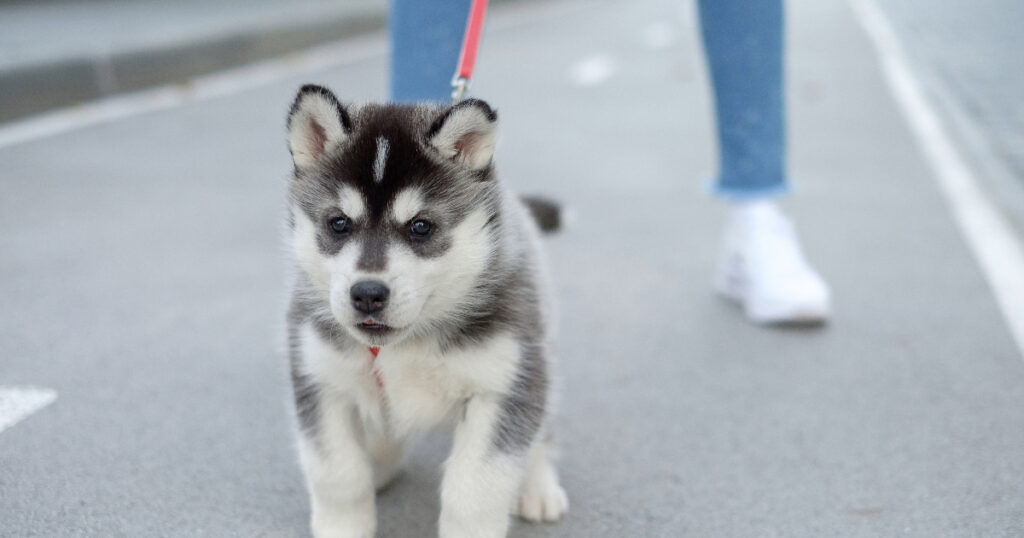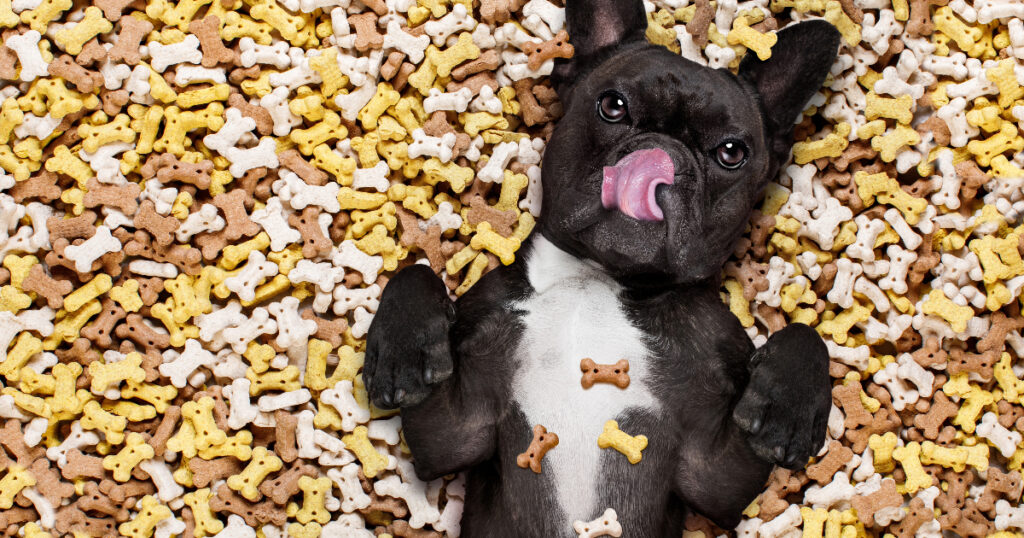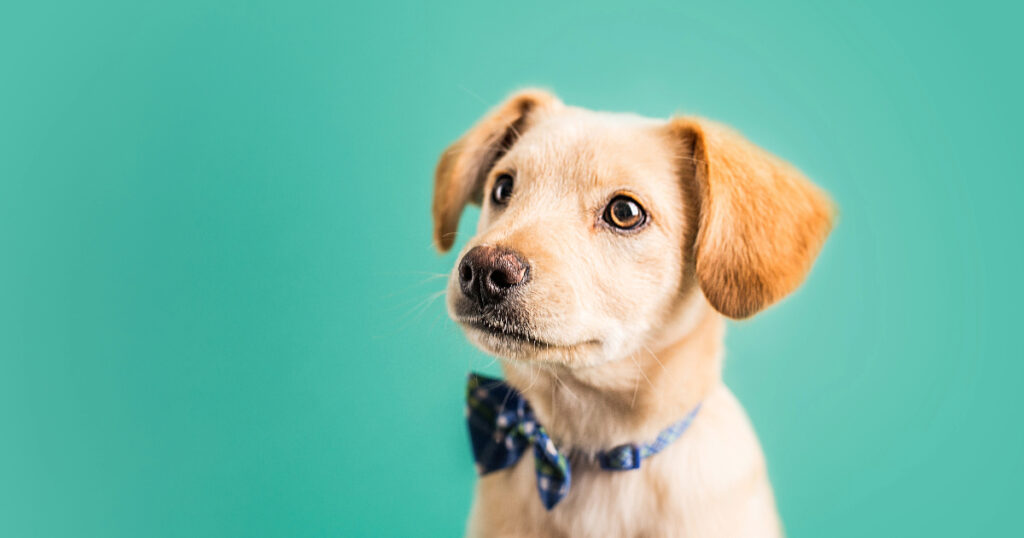Teaching your dog to walk politely on a leash is an essential skill that takes patience and consistency. With the right techniques and equipment, you can train your canine companion to stick by your side without pulling or lagging behind.
Proper leash walking provides safety and control while strengthening the bond between owner and dog through clear communication and rewards-based motivation.
This guide covers everything you need to know, from choosing the right collar and leash to mastering distraction training and more.
Choose the Right Equipment
Having the proper leash and collar or harness is crucial for teaching your dog to walk nicely on a leash. A 6-foot nylon or leather leash is recommended for optimum control and comfort. Chain leashes are too heavy and can chafe. Retractable leashes do not allow for keeping your dog close at hand.
For the collar or harness, a front-clip harness gives you the most control over your dog. When he pulls, it will turn him back towards you. The leash attaches to your dog’s chest at sternum level. A regular flat collar or martingale collar are also good options, as long as they fit properly high on your dog’s neck, just behind his ears. The collar should slide down to the neck when tightened to avoid choking.
Start Training Early

Begin leash training as soon as you bring your puppy home, ideally between 8 and 12 weeks old. The earlier you start, the better chance you have of preventing bad habits from developing. Puppies like to explore new environments. With the leash on indoors first, you can maintain control while letting your pup wander and sniff around.
Once your puppy is comfortable walking around your home on a leash and paying attention to you, you can move to your yard or a park. Bring tasty treats to reward good leash manners. If your puppy is over 4 months old and is very strong or hasn’t been leash-trained, start training inside your home first.
Proper Introduction

When first using a collar or harness and leash, allow your puppy to sniff and investigate them while giving praise and treats. Gently put the collar or harness on your seated puppy and let him get accustomed to wearing it, feeding treats as you give praise.
Next, with your pup sitting, attach the leash and let him drag it around while staying close to keep him from getting tangled. Use treats and praise when he focuses on you, the leash against his chest or back. Do this for short sessions until your puppy ignores the leash.
Establish Ground Rules
It’s vital to set ground rules and start training from day one. Always hold the leash properly by making a “U” with your hand, folded under the leash. Keep your puppy on your left side, and don’t allow him to walk in front of you. Use command words like “let’s walk” to initiate, “this way” and “with me” when changing direction.
When you stop, have your pup sit and wait until you say “Let’s go.” Reward with praise and treats when your puppy focuses on you and follows commands. Use the word “no” only when your puppy pulls on the leash or walks ahead of you. Avoid shouting or frustration. Remain calm, consistent, and positive.
Proper Correction
When your puppy pulls on the leash, calmly stop walking, get his attention with an “uh uh” and ask him to sit. Give praise and a treat when he sits, waits for your cue, and starts walking by your side again. With a front-clip harness, your dog will turn back toward you when he pulls ahead.
If using a collar, turn and walk the opposite way when your puppy pulls. Avoid jerking the leash back. Take treats on walks to reinforce good leash manners. Correct pulling right away or your puppy will think it’s acceptable behavior.
Practice Loose Leash Walking
You want to teach your puppy to walk without pulling. This takes time and patience. As you start each walk, remind your puppy to stay with you by showing a treat at your side. Keep sessions short at first. Give verbal praise and treats every few steps when your puppy’s leash stays loose.
Gradually increase the number of steps taken before treatment. Vary the pattern – take 3 steps, treat; take 5 steps, treat; take 2 steps treat. Keep your puppy guessing. Practice random changes in direction without warning. The goal is to have your puppy focused on you for the reward.
Work on Distractions
An excellent way to practice loose-leash walking is by using distraction training. With your puppy on a leash, have a helper hold a treat to get your pup’s attention. Reward your puppy with a treat from you when he ignores the helper and stays focused on you.
Practice with different real-life distractions – other people, dogs, bicycles, and cars. Start at a distance from the distraction and gradually work closer as your puppy masters ignoring each type of distraction. Giving treats at your side will keep your pup focused on you.
Take It Slow
Don’t expect too much too soon from your puppy. Keep initial training sessions short, 5 minutes or less. Young puppies have short attention spans. You want to end each session on a positive note, with your puppy responding well to praise and rewards.
Build in play breaks to avoid frustration and overstimulation. Increase time for training walks slowly as your puppy masters skills. With an adult dog who has no leash training, follow the same steps but keep sessions very short if he has a short attention span.
Proper Fit Matters
Be sure your puppy’s collar or harness fits properly before attaching the leash. You should be able to fit two fingers between the strap and your dog’s neck or chest. Check the fit regularly as your puppy grows.
A collar or harness that is too loose can slip off or allow your dog to back out. One that is too tight will be uncomfortable and restrict breathing. Your puppy should not be able to wriggle out of his collar when you grab the leash.
Switch Side for Variety
Once your puppy is regularly walking nicely on your left side, start training him to heel and walk properly on your right side too. Practice on each side during separate training sessions so as not to confuse your puppy.
Use the same verbal cues – “Let’s walk” to start, give the “this way” command when changing sides, and “with me” when asking your puppy to catch up and stay close. Always reward your puppy for focusing on you and staying by your side.
Use Treats Sparingly
Although using treats is effective when teaching loose leash walking, you don’t want your puppy to depend on constant treats. Use small pieces of soft treats that are easy to chew and swallow quickly. Vary how often you give treats to reward your puppy.
Gradually decrease how many treats you give so your puppy responds to your verbal praise. Alternate giving treats with verbal praise only to reinforce training. You want your puppy to pay attention and obey because you said so, not just for a food reward.
Keep Training Consistent
Everyone who walks your puppy should use the same leash training techniques. It will confuse your puppy if different people use different commands and correction methods. Explain proper leash walking rules to family members, especially children.
Supervise young kids to ensure gentle handling. Make sure your puppy masters basic training and is not easily distracted before having strangers or children walk him. Consistency from the whole family will help your puppy learn faster.
Use Proper Equipment
For large, powerful dogs, use thick, sturdy leashes. Retractable leashes teach pulling and give you little control. Choose a front-clip harness for easy steering and control. For smaller dogs that pull, a head halter gives excellent directional control.
Avoid choke chains and prong collars. They can injure your dog and damage the relationship between you and your dog. Proper equipment allows you to control and steer your dog without harsh methods that can cause harm.
Practice Every Day
Frequent, brief daily practice sessions with your puppy are more effective than longer, infrequent sessions. Daily walks of 5-15 minutes, using positive reinforcement training, will produce the best results. End each session when your puppy is attentive and obeying commands.
Refresher training will likely be needed at various stages as your puppy goes through fear periods, teething, and adolescence. Remain patient and consistent, stick with positive methods, and in time you’ll have a well-trained dog who enjoys walking politely on a leash.
Stay Calm and Patient
Dogs easily pick up on your mood and emotions. If you get angry, frustrated, or tense, your puppy will pick up on that energy. This can cause them to become anxious, excited, or fearful – which will make leash training much more difficult.
Stay relaxed and calm whenever you work on leash training. If needed, take a few deep breaths to center yourself before clipping on your pup’s leash. Your calm, assertive energy will help your puppy relax and focus on obeying your commands.
Use Proper Voice Tone

How you say command is just as important as what you say. Use a firm tone that conveys authority, confidence, and decisiveness. Your puppy will be less likely to obey if you sound timid or unsure. But avoid yelling or sounding angry.
Infuse positivity into your voice when praising your puppy. Use an animated, friendly tone when rewarding loose leash walking or giving the “let’s walk” cue to help generate enthusiasm and excitement in your pup.
Make It a Lifestyle
Proper leash manners require lifelong reinforcement. After your puppy masters loose leash walking, don’t abandon training. Continue reinforcing training on all your daily walks. Use periodic refreshers when needed throughout your dog’s life.
Dogs thrive on routines. By making leash training a part of your long-term relationship, you’ll have a well-adjusted, obedient companion at your side for years to come. Committing to ongoing training cements you as your dog’s trusted leader.
Transition Off Treats

Once your dog reliably walks nicely on a leash, you can phase out food treats for praise only. Slowly decrease how often you give treats on walks. Replace every other treat with verbal praise and petting.
Vary when you reward your dog – sometimes treat after 2 minutes of loose leash walking, other times go longer. Keep your dog guessing! Rewarding with praise only helps reinforce that you don’t always have food on walks.
Use Proper Hand Position
How you hold the leash makes a difference in maintaining control and reinforcing training. Grasp the leash firmly with one hand and make a “U” with your fingers and palm facing up, folded under the leash.
Keep your arm bent at your side, leash tucked against your hip. Don’t wrap the leash around your hand or wrist as this can cause rope burns. Holding the leash properly gives you leverage to prevent pulling.
Stay Positive
Leash training takes a lot of patience. But avoid scolding or punishing your puppy for pulling or misbehaving. Harsh corrections will erode the bond of trust between you. It’s much more effective to redirect your puppy into proper behavior and reward him.
If your puppy starts pulling, stop and change direction instead of yanking back on the leash. Use treats, praise, and your happy tone of voice to motivate your puppy to focus on you and practice loose leash walking. Staying positive keeps training enjoyable.
Allow Sniff Breaks
It’s normal for dogs to want to stop and sniff on walks. Allowing occasional sniff breaks can make training easier and more enjoyable. Bring your puppy back into a sit or heel position after a minute of sniffing, then continue your walk.
When your puppy is reliably walking on a loose leash, give the cue “go sniff” as permission for a sniffing break. Put him back into a controlled heel position afterward and praise him before resuming your walk. Sniff breaks enhance the human-canine bond.
Make It a Game
Incorporating play and having fun can make leash training more rewarding for both you and your puppy. Bring along a favorite toy and initiate short bursts of play when your puppy is focused on you. Use your happy voice to generate excitement and energy.
Make walking close to your side and not pulling into a game. Reward your puppy with play and praise when he does well. Training sessions should include plenty of positive reinforcement through play, petting, praise, and treats for motivation.
Use Proper Collar Fit
A properly fitted collar or harness is important when leash training. You should be able to slide two fingers between the strap and your dog’s neck or chest. Allow room for growth if your dog is young.
Check for proper tightness each time you walk your dog. Restricting breathing can cause gagging or choking. A loose collar can slip off or allow backing out. Your dog should not be able to wriggle free when you hold the leash taut.
Avoid Harsh Corrections
Training methods like leash popping, prong collars, and choke chains rely on pain and intimidation. These force-based tools can cause behavioral problems and damage your relationship with your dog. They do not address the motivation behind pulling.
Stick with positive reinforcement techniques – rewards, praise, and clear communication. With patience and consistency, reward-based methods yield excellent results in leash training without harming the human-canine bond. They create a willing partnership.
Stay Consistent
Everyone who handles your dog should use the same leash-walking training methods and commands. Inconsistency will confuse your dog and delay training. Make sure all family members use the same techniques.
Explain the ground rules to children when teaching them to walk your dog – no yelling, jerking the leash or letting the dog drag them. Supervise young kids to ensure gentle handling. Consistency results in a well-trained dog.
By following these guidelines, you can teach your dog to walk politely on a leash without pulling. Have patience, keep sessions positive and rewarding, use proper equipment, and remain consistent. With regular practice and lifelong reinforcement, you’ll have a companion who enjoys walking by your side.
FAQ
How To Stop Excessive Barking When Out Walking?
Excessive barking on walks is a common frustration for many dog owners. Here are some tips to curb excessive barking when out walking your dog:
Bring tasty treats on your walk to immediately distract and reward your dog when he stops barking on cue. Small soft treats work best. Praise when he redirects his focus to you.
Avoid harsh corrections like leash jerks or yelling. This can increase stress and aggravate barking. Instead, remain calm and use positive reinforcement.
If your dog barks at specific triggers like bikes or runners, work on focus training at a distance from the trigger first, then gradually move closer as your dog learns to ignore distractions.
Use the “quiet” command and reward with treats when your dog stops barking. This builds a positive association with being silent on cue. Be patient – it may take many repetitions.
Walk at quieter times of the day if your dog is easily overstimulated. Avoid peak times when you’re likely to encounter more trigger stimuli like other dogs, noisy vehicles, wildlife, or children at play.
Use a front-clip harness to gain more control if your dog tends to bark and lunge on a leash. The leash attachment on the chest allows you to easily turn your dog back toward you.
Be patient and consistent with using positive reinforcement methods. With time and daily practice, you can curb excessive barking on walks.
How Can I Regain Control If My Dog Gets Excited And Starts Pulling?
It’s frustrating when your dog who normally walks politely starts pulling uncontrollably on the leash. Here are tips to quickly get control again:
Stop walking immediately – do not allow your dog to drag you. Plant your feet firmly and stand still until the leash is loose again.
Give a verbal cue like “let’s go” to start walking again in the opposite direction once your dog refocuses on you. This helps break the mindset and regain control.
Carry high-value treats you can use to immediately refocus your dog’s attention back on you when overexcitement strikes. Reward calm behavior.
Use a front-clip harness for extra steering power if your dog tends to bolt when excited. It allows you to easily turn them back toward you.
Practice exercises that teach impulse control like rewarding eye contact, sitting, and stays. This mental conditioning will help your dog maintain composure when excited.
Stay positive – never punish pulling by yanking or shouting. With patience and consistency, you can recondition your dog to make good choices even when excited.
Conclusion
Following positive reinforcement methods, while using the proper leash and collar or harness, will set your dog up for success in learning to walk without pulling or lagging behind.
With patience and consistency, you can achieve a solid loose-leash walking companion. Keep training motivating with play, praise, and rewards.
Leash walking provides ideal bonding time and the ability to safely explore the world together.
Put in the early work, practice often, and reinforce training regularly, and you’ll have a polite walking companion for years to come.

